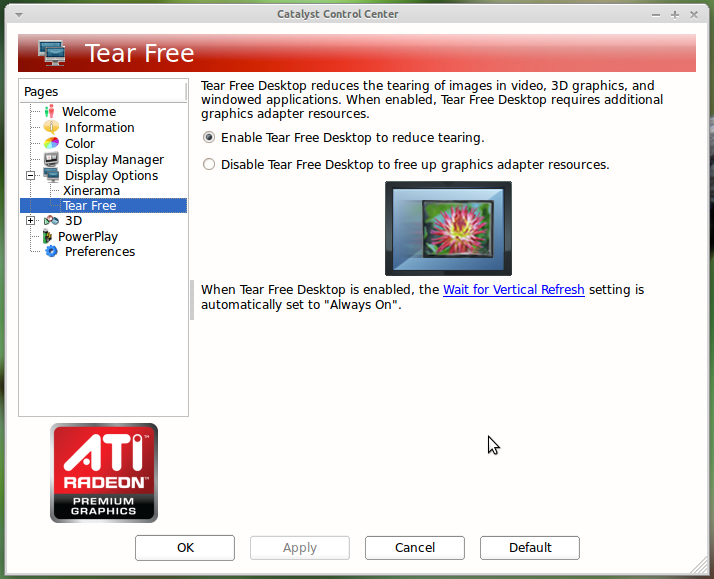Install Ati Driver In Linux
Pamietnik Rutki Laskier Ebook. Contents • • • • • • • • • • • • Identification The AMD/ATI graphics processing unit (GPU) series/codename of an installed video card can usually be identified using the lspci command. For example: • $ lspci -nn grep VGA 01:00.0 VGA compatible controller [0300]: Advanced Micro Devices, Inc. Clash N Slash 2 Full Version Free Download. [AMD/ATI] Barts PRO [Radeon HD 6850] [1002:6739] See for more information.
Aug 20, 2017 However the open source AMDGPU driver is available to install through the xserver-xorg-video. Arch Linux ati driver. RadeonDriver (last edited 2017. Reaktor 5.6.2 No Previous Installation Found. Drivers for AMD Radeon 5450, 5550, 5570, 5650, 5670. For Linux® systems. Driver Install How-to Articles.
Drivers Support for newer AMD graphics hardware is provided by the package. Support for older AMD (nee ATI) graphics hardware is provided by the driver wrapper package, which depends on three hardware-specific driver packages: • • • The ati wrapper driver autodetects whether your hardware has a Radeon, Rage 128, or Mach64 or earlier chip and load the radeon, r128, or mach64 xorg video driver as appropriate. Supported Devices The amdgpu driver in supports newer AMD GPUs.
The radeon driver in supports R100 to Hawaii (Radeon 7000 - Radeon R9 290) GPUs. See the manual page and the on the X wiki for more information. Firmware Proprietary, binary-only firmware (aka microcode) was removed from the Debian kernel's radeon DRM driver in 2.6.29-1, to resolve Debian bug. The firmware can be provided by installing the or package. Without this package installed, poor 2D/3D performance in the radeon driver is commonly experienced. Some GPUs may require firmware to operate the X Window System, or do dual display. Installation The following procedure will install the open source display driver packages, DRI modules (for 3D acceleration) and driver firmware/microcode: • Add 'contrib' and 'non-free' components to /etc/apt/sources.list, for example: # Debian 8 'Jessie' deb jessie main contrib non-free • Update the list of available packages: # apt-get update • Install the, and packages: # apt-get install firmware-linux-nonfree libgl1-mesa-dri xserver-xorg-video-ati • Restart your system to load GPU device firmware.

Troubleshooting • Use of firmware/microcode used by the radeon DRM driver can be verified using the command.
AMD drivers can be a little trickier depending on whether you want to use proprietary drivers or not. By default, Ubuntu uses the open-source Radeon drivers when it detects an AMD graphics card in the system. These drivers are maintained by a team employed by AMD and are more up to speed than the Nvidia open-source drivers. In many games, you may not even notice a difference between the two. However, the closed-source Catalyst driver (also known as the fglrx driver) is made available for those who would like to use it. To begin installation of the Catalyst driver, you have two options: First, you can go visit the AMD website and enter your graphic card details. If you're not sure which graphics card you are using, you can find out using this command at the terminal: $ lspci –vvnn grep VGA.
The AMD catalyst driver comes bundled with a GUI control centre where you can change graphics configurations easily to suit your tastes Second, you can install the graphics driver via command line. Some Linux gamers prefer this method as it can be less prone to error, but we'll cover both. Depending on the graphics card you're using, the will supply you with the appropriate driver version. However, if you're handed a legacy driver version (often the case with older cards), it may be better to stick with the opensource radeon driver, which tends to support older cards better. We would recommend sticking with the open-source driver if you are using a graphics card older than the HD 6xxx series. Note: if you're switching from another graphics card, say from Nvidia, make sure to uninstall the driver for the previous card before proceeding. You can also find graphics drivers available in the Ubuntu Software Center (or Software as it's called in 16.04).